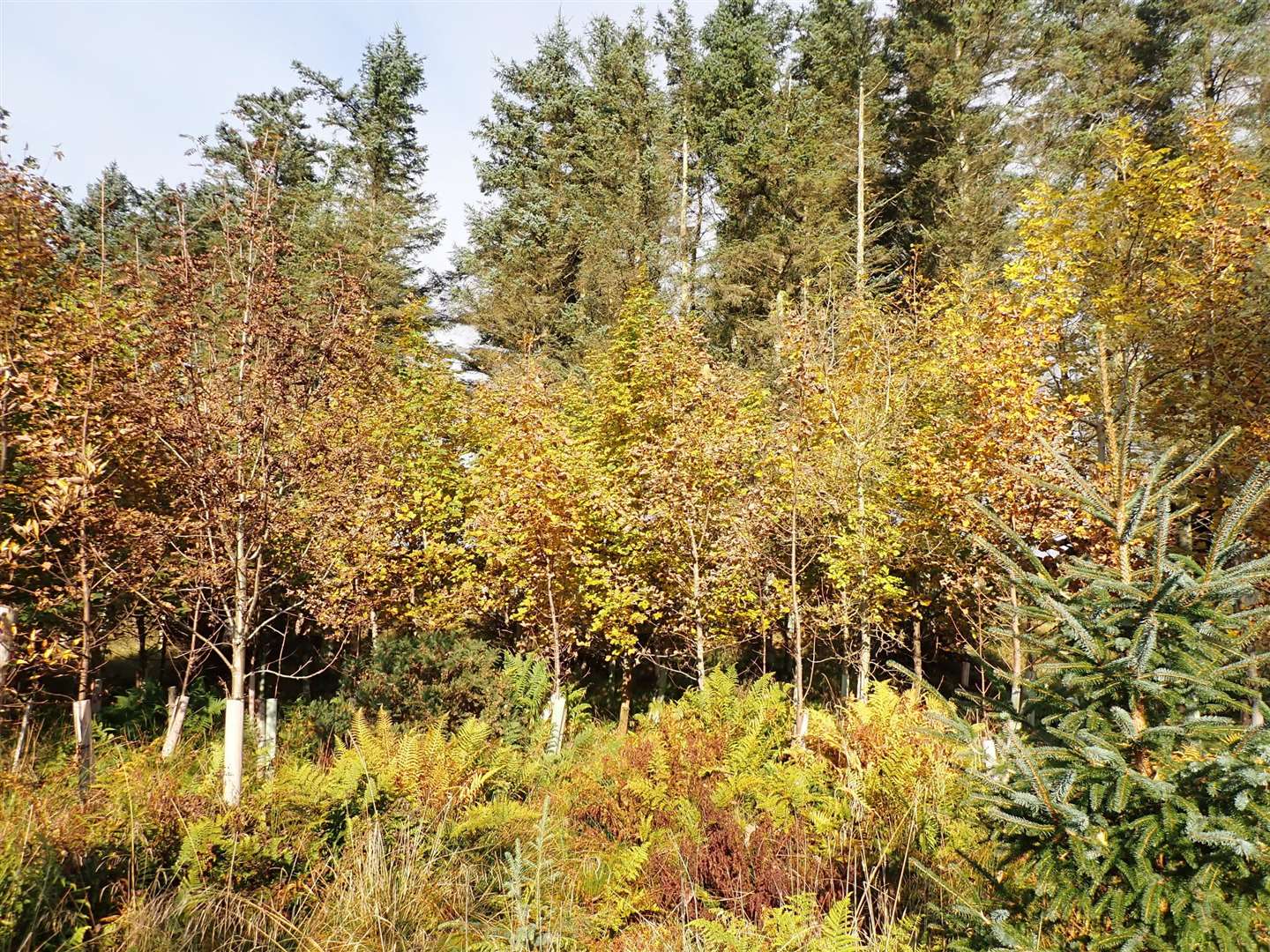Planting trees in Caithness is always an act of faith!
Register for free to read more of the latest local news. It's easy and will only take a moment.
Planting trees is regarded by some as an act of almost religious significance, a spiritually uplifting and enlightening activity. It is certainly an act of faith in Caithness, but in actuality it is just sheer hard work.
I’ve owned a wood for nearly 20 years, it was sold off cheap because the densely planted spruce and pine were starting to blow down and it would cost more to extract the timber than it was worth.
Over the intervening time an endless source of firewood has heated our house, while the wood has gradually been transformed into a tremendous habitat for wildlife, plants and birds.
As trees blew down in storms I gradually cleared them, replanting with broadleaves. Only recently has the area of windblow become so great that large machinery has been needed, the timber being taken away in bulk to supply local biomass heating schemes.
Half the original area is now a tangle of mostly fallen and dead trees with just a few standing – in the past this could all have been cleared but recently the rules have changed and you need felling permission – even for fallen trees! I await a long-overdue response from Forest Scotland to my application.
Meanwhile there is plenty of other work to do. Forestry work was permitted during the lockdown so I could spend plenty of time clearing and planting. Because there are lots of roe deer in the wood, new trees have to be protected by tubes or the deer will browse them and rub off the bark to mark territory.
Small enclosures of fence-wire work to some extent. I reuse defunct rolls from a dismantled fence near Loch More. It takes me at least an hour to properly plant six little trees each with its hole, fertilizer, water, stake, and tube or fence.
Common alders and sycamores are about the only ones you can be reasonably confident of on an exposed site of clay and peaty soil at an altitude of over 100 metres near the north coast. Rowan, Swedish whitebeam, wild cherry and willows usually grow, birch is iffy but a local strain in a good location might be successful. Horse chestnut, beech, hawthorne and apple will probably grow extremely slowly in more sheltered locations. But the staples are alder and sycamore.
Pine-martens have lived and bred in the wood for a number of years. Occasionally I see one of these magnificent animals and have also seen the kittens on several occasions.
A couple of years ago they tried to set up residence in the cabin and caused havoc before I managed to evict them – the TV programmes don’t mention the damage they can do!
Otters make their way through the wood, especially enjoying a marshy area, foxes take up temporary residence, there are voles, literally thousands of mice, there are tits and crossbills and owls and sparrow-hawks and cuckoos and woodcocks, there are dragonflies and butterflies and woodwasps – as well as midges and a few ticks. There are rare orchids, ferns, bogbean and marsh cinquefoil, ragged robin and butterwort.
Although never far from the road, parts of the wood now feel a truly wild place. There are several paths, or perhaps routes is a better term, but these often get blocked as trees uproot and it’s a constant job with the chainsaw to keep them passable. Another path had become blocked by thickets of rush and eventually the only way of clearing it was to lug in a heavy brush-cutting strimmer.
Walking in the wood invariably turns into working. Tree-tube stakes rot and the tube and tree fall over, every visit there’s another one needing to be rescued with a new stake. In most locations the tree would have long since grown out of the tube. Or the young trees get choked with weed. And then there’s the salmonberry, a thorny Alaskan alien like an orange raspberry which would carpet and choke everything if not constantly cut down, pulled up or sprayed. In four years it grows from an innocuous seedling to a huge woody bush with enormous roots, crowding out everything else.
And yet the young trees have mostly been successful. This year, for the first time, there were true autumn colours where, a dozen years ago, was just a big clump of tree-tubes. It is always, though, an act of faith to plant the next batch while thinking, ‘it will never grow’!







